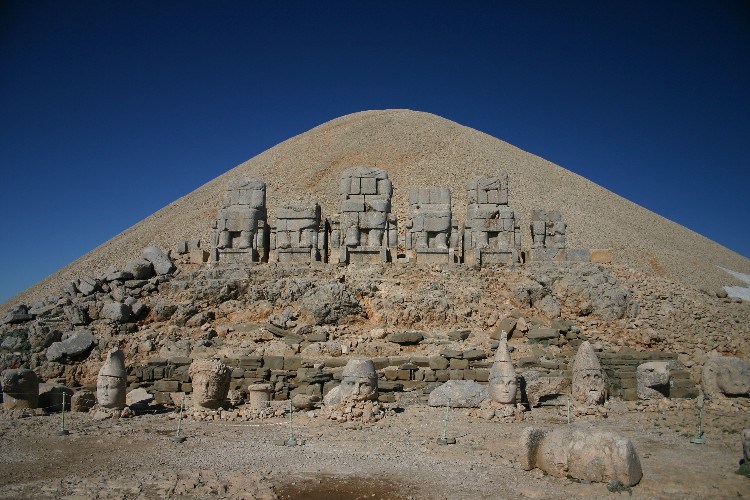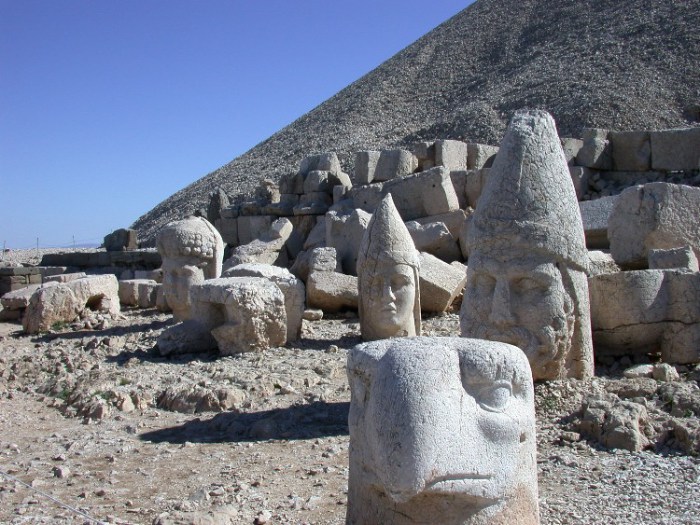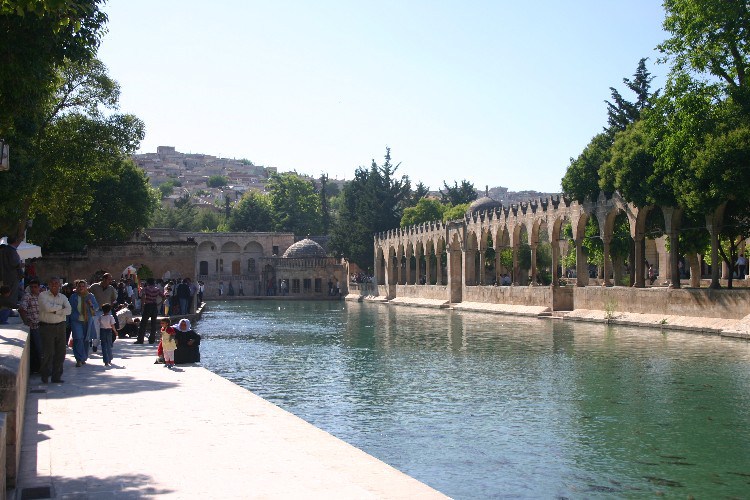Mt Nemrut:
N 37°58.882’
E 038°44.462’
2,168 metres
Sanliurfa:
N 37°08.873’
E 038°47.864’
Antiochus was King of Commagene,
a tiny kingdom strategically placed on the Euphrates, bordered by the Roman Empire on the west and the Parthian Empire on the east. Using diplomatic and military skills, he kept both the Romans and the Parthians at bay, and protected the sovereignty of his kingdom. To shore up his rule, he declared himself to be a god, and to commemorate himself built a magnificent hierothesium (combined temple and tomb), called the Throne of the Gods, at the top of Mt. Nemrut. There is an eastern and a western terrace, and between them there is a 50 metre high man-made summit of crushed rock. Both terraces included 8 metre tall stone statues of various gods, including Antiochus – due to earthquakes, the heads of the statues on the eastern and the complete statutes on the western terrace have tumbled.
Up and Up
We start our trip up the mountain at 6:30 a.m., well after sunrise. Most tourists leave much earlier, to experience sunrise at the top. We can drive most of the way up, a long, tortuous route, but must walk up the last 500 metres. As we go up we are passed by tour bus after tour bus coming down, and when we get to the top we discover the virtue of the late start, as we are the only people at the summit. The view over the valley, including the Euphrates, is amazing, but the site itself is more so. I wander the site, thinking of the labour required to construct this place, on the top of this forbidding, windswept mountain, and the conceptual and engineering ingenuity required to plan and execute it. Over 2,000 years after Antiochus died and almost as long after his tiny kingdom was conquered by and absorbed into the Roman Empire, Mt. Nemrut stands as a beautiful and powerful reminder of a brilliant, if somewhat egotistical, leader.
Crossing the Euphrates
From Mt. Nemrut, we head off to Sanliurfa, a 3 hour drive south, crossing as we go the Euphrates, crossing into Upper Mesopotamia. Sanliurfa means “Glorious Urfa” – it was renamed after the residents defeated an attempted invasion by the French shortly after the end of WWI. It is also known as the City of Prophets, for it is famed as the birthplace of Abraham, the city in which he was immolated by the Assyrian King Nimrod and where God saved him by turning the fire into water and the coals into fish. Our first stop is the town’s main mosque, originally built as a Crusader church. We walk through town, visiting the covered bazaar, the cave in which Abraham was born, and the sacred pool that was created when the fire was turned to water. It is full of huge carp, who sit at the surface with their mouths open – they have been well-trained by the hordes of pilgrims, who buy fish pellets and feed them.
A Final Dinner Together
After naps and showers, we head out for our final dinner together. Tomorrow, the group separates. We go to the Press Club, a private club Haluk has managed to get us into, for our meal, and dine under the stars on the roof terrace.
We stay long after the meal is over, chatting and reminiscing about the trip, each one talking of his or her favourite part, not wanting the evening to end.

















Comments